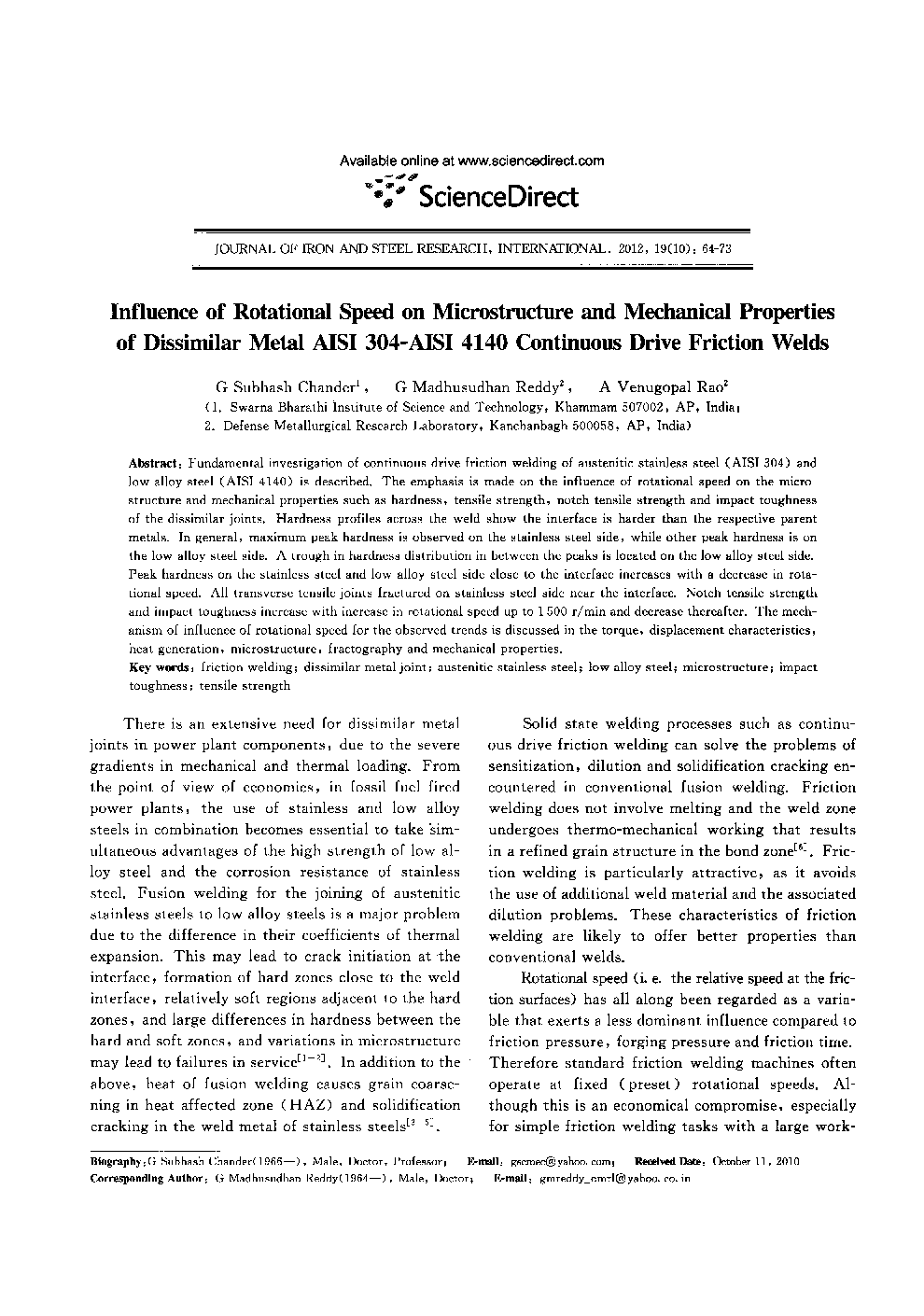| Article ID | Journal | Published Year | Pages | File Type |
|---|---|---|---|---|
| 1628827 | Journal of Iron and Steel Research, International | 2012 | 10 Pages |
Abstract
Fundamental investigation of continuous drive friction welding of austenitic stainless steel (AISI 304) and low alloy steel (AISI 4140) is described. The emphasis is made on the influence of rotational speed on the microstructure and mechanical properties such as hardness, tensile strength, notch tensile strength and impact toughness of the dissimilar joints. Hardness profiles across the weld show the interface is harder than the respective parent metals. In general, maximum peak hardness is observed on the stainless steel side, while other peak hardness is on the low alloy steel side. A trough in hardness distribution in between the peaks is located on the low alloy steel side. Peak hardness on the stainless steel and low alloy steel side close to the interface increases with a decrease in rotational speed. All transverse tensile joints fractured on stainless steel side near the interface. Notch tensile strength and impact toughness increase with increase in rotational speed up to 1500 r/min and decrease thereafter. The mechanism of influence of rotational speed for the observed trends is discussed in the torque, displacement characteristics, heat generation, microstructure, fractography and mechanical properties.
Keywords
Related Topics
Physical Sciences and Engineering
Materials Science
Metals and Alloys
Authors
G Subhash Chander, G Madhusudhan Reddy, A Venugopal Rao,
